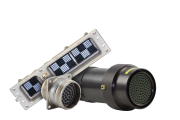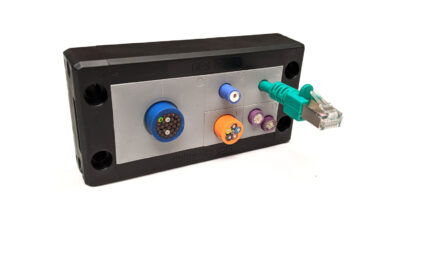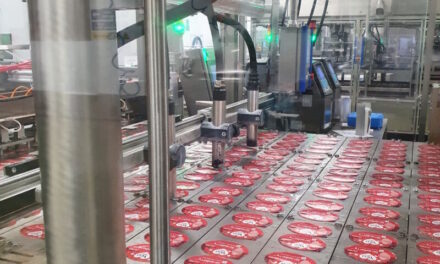Digitalisation over the past decade has meant food and beverage manufacturing and processing has become a highly automated business. The need for fast and reliable electrical connections to prevent machine downtime and disruption on the supply chain is crucial to growing this £121 billion industry. Here Dawn Robinson, European product manager for electrical connector specialist PEI-Genesis, explores the considerations when choosing a connector for a food processing environment.
According to a Oneserve survey of British manufacturers, three per cent of all working days are lost annually to machine downtime, equating to almost 50 hours of work and approximately £31,000 per facility.
In food and beverage processing, studies have identified water-damage and corrosion as possible reasons for machine downtime. It is undoubtable then, that every machine component should be carefully considered — electrical connectors are no exception.
Industry challenges
A case study by cable and connector supplier Harting found that food and beverage processes are subject to regular water ingress problems with their glands and connectors. This often occurs when connector seals are not able to withstand rigorous cleaning with high-pressure water streams, leading to corrosion from cleaning chemicals, like hydrochloric acid. As a result, the food manufacturer is constantly having to replace the electrical components and seals, resulting in production disruption and mounting repair costs. What’s more, recurrent damage to the electrical machine components put the factory at risk of fire.
Unfortunately it isn’t a case of adjusting cleaning protocols, as they must be thorough to comply with the Food Standards Agency’s Hazardous Analysis of Critical Control Point (HACCP) principles. However, even the most rigorous processes struggle to remove all contaminants. According to tests conducted at the Research Institute of Sciences and Engineering in Sweden, even after hygienic cleaning, levels of bacteria can remain high on food processing machinery.
For example, residue can get stuck in dirt pockets on the hoods of electrical connectors and as a result, bacteria can spread onto the machine areas in direct contact with the food. If bacterial contamination were to occur and product recalls were necessary, not only would it be costly and disruptive, but the health of the consumer would be at risk.
Contaminant-free connection
Specialist engineers are now waking up to the demands of the industry and, as a result, have tailored connector design to address the common issues. So, what design features make a connector suitable for this challenging environment?
Firstly, connectors need to be able to transmit power in areas requiring cleaning with jet water streams and acidic chemicals. This means the hoods and housings must be water-tight, so power transmission is maintained despite rigorous cleaning threatening the electrical interfaces. When choosing a connector, you can look out for IP69K protection, housing approved by the Food and Drug Administration and an ECOLAB certification. For example, the Harting Han F+B range offers all three. With power connections protected, high production rates can be maintained, preventing disruption to the supply chain.
Connectors for food and beverage processing must also be easy to handle. Ideally, operators shouldn’t need to open control cabinets to decouple machinery or call in for an expert to replace parts when the solution is relatively simple — service teams are already under pressure to rectify problems efficiently. Best practice for food manufacturers is therefore to choose a plug and play device, designed for easy and quick changeovers.
Regularly replacing and repairing connectors will eat into production times and costs. By specifying a product that is easy to use, can withstand cleaning processes and has the relevant certifications, manufacturers can reduce machine downtime.
Find out how food and beverage connectors can be adapted to your individual machine designs by visiting the PEI-Genesis website.



